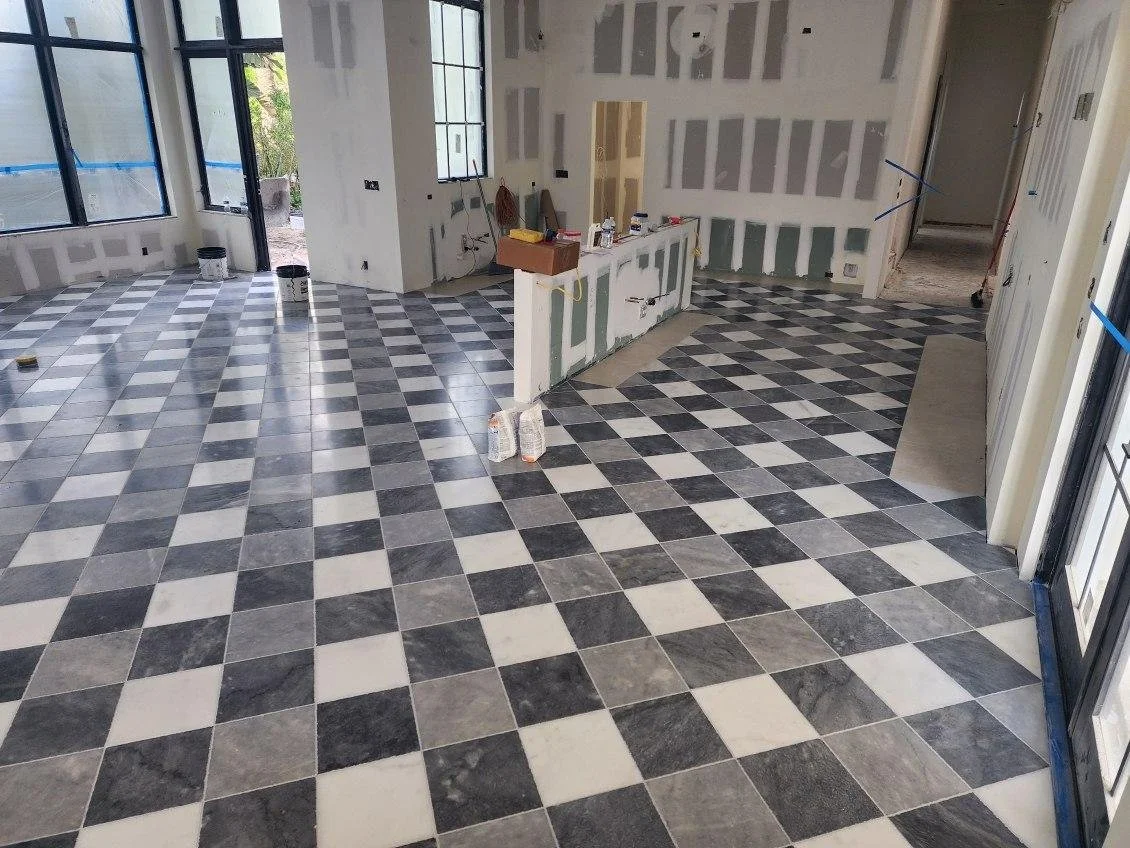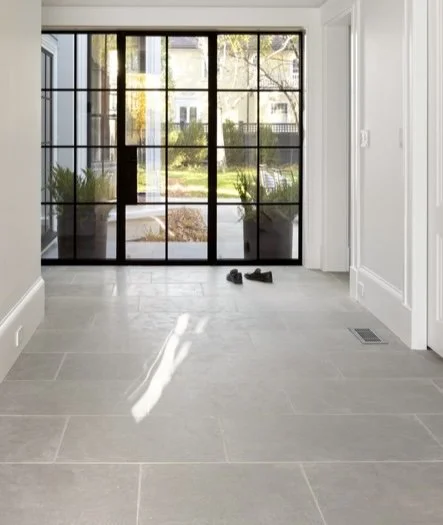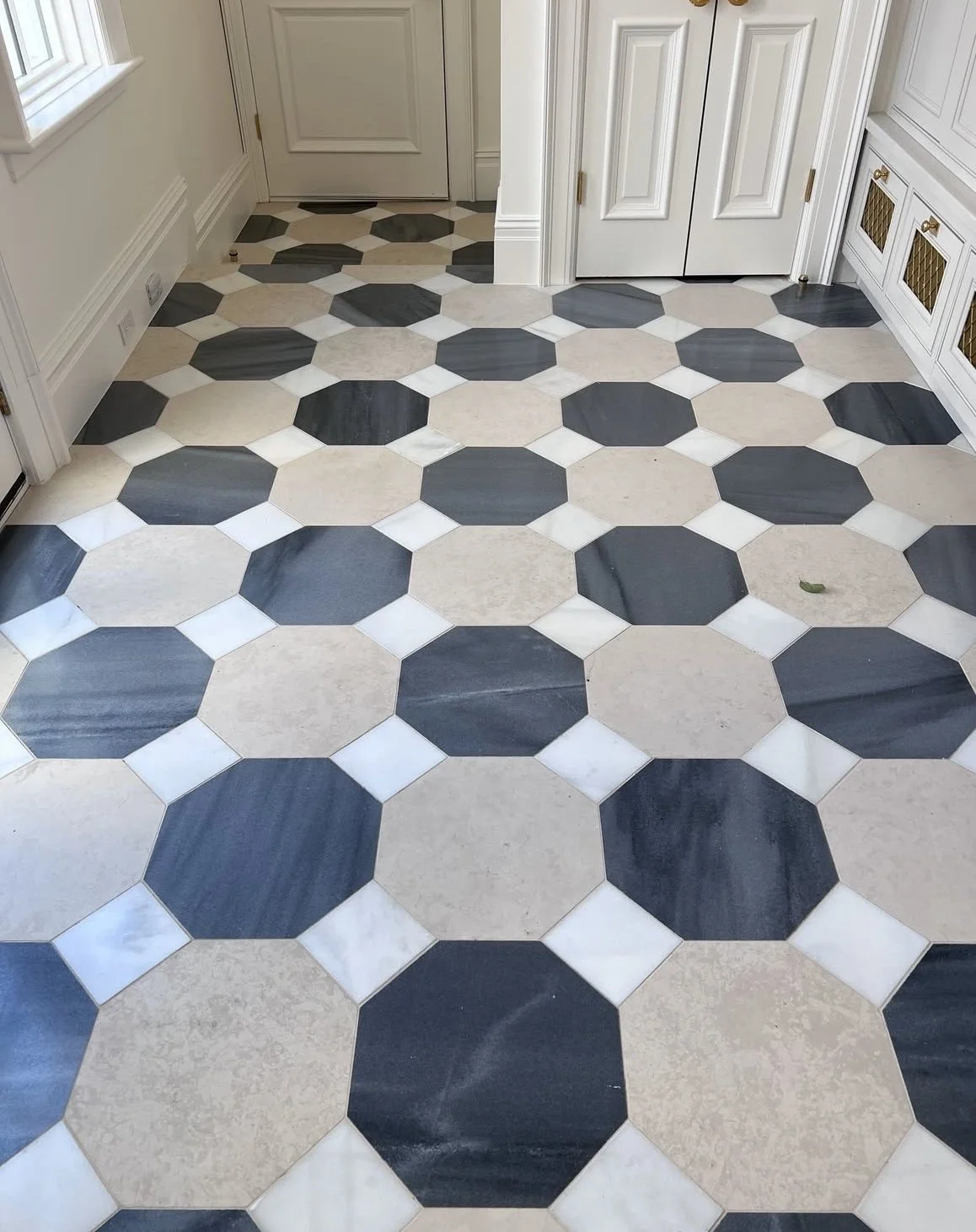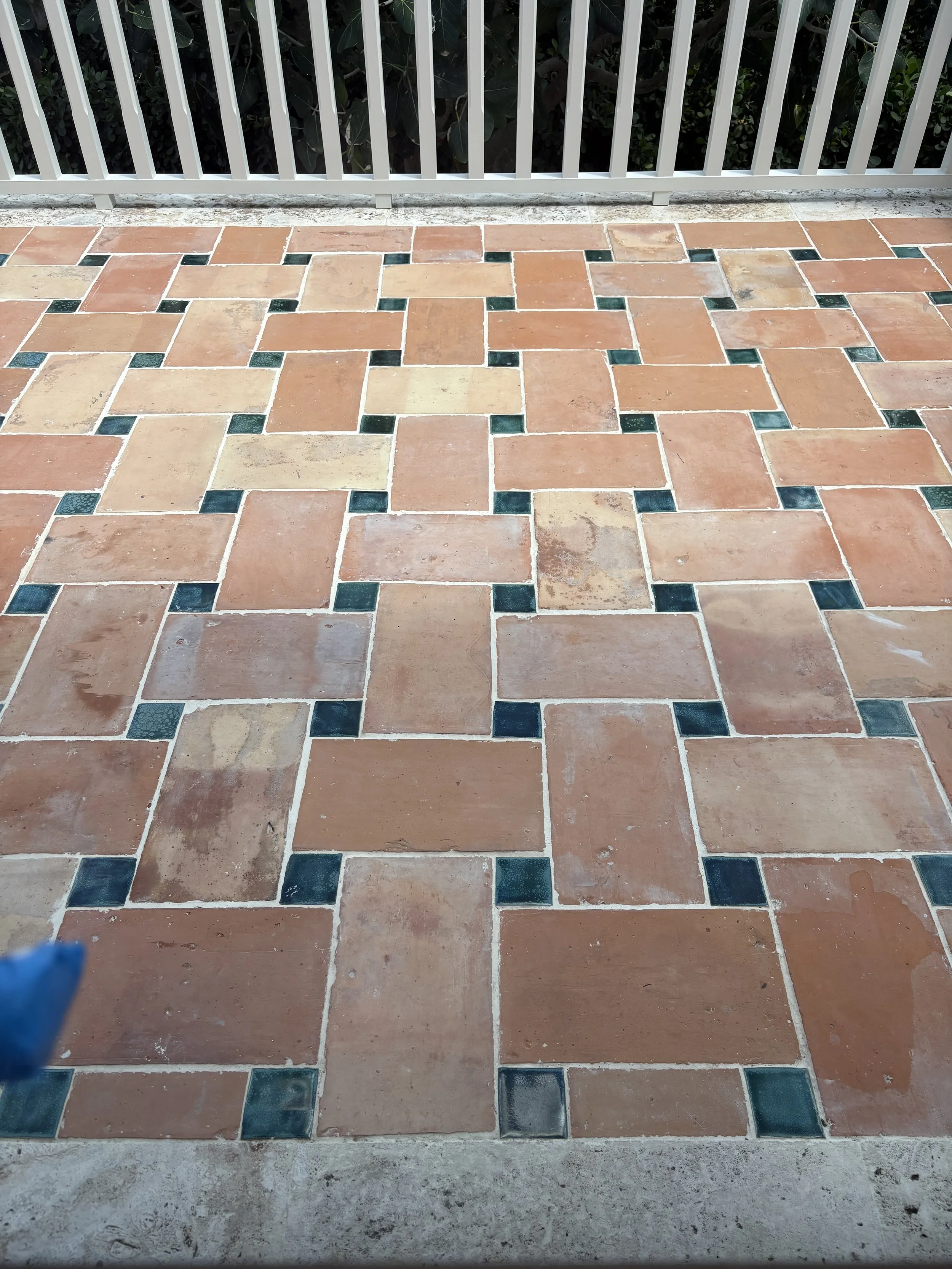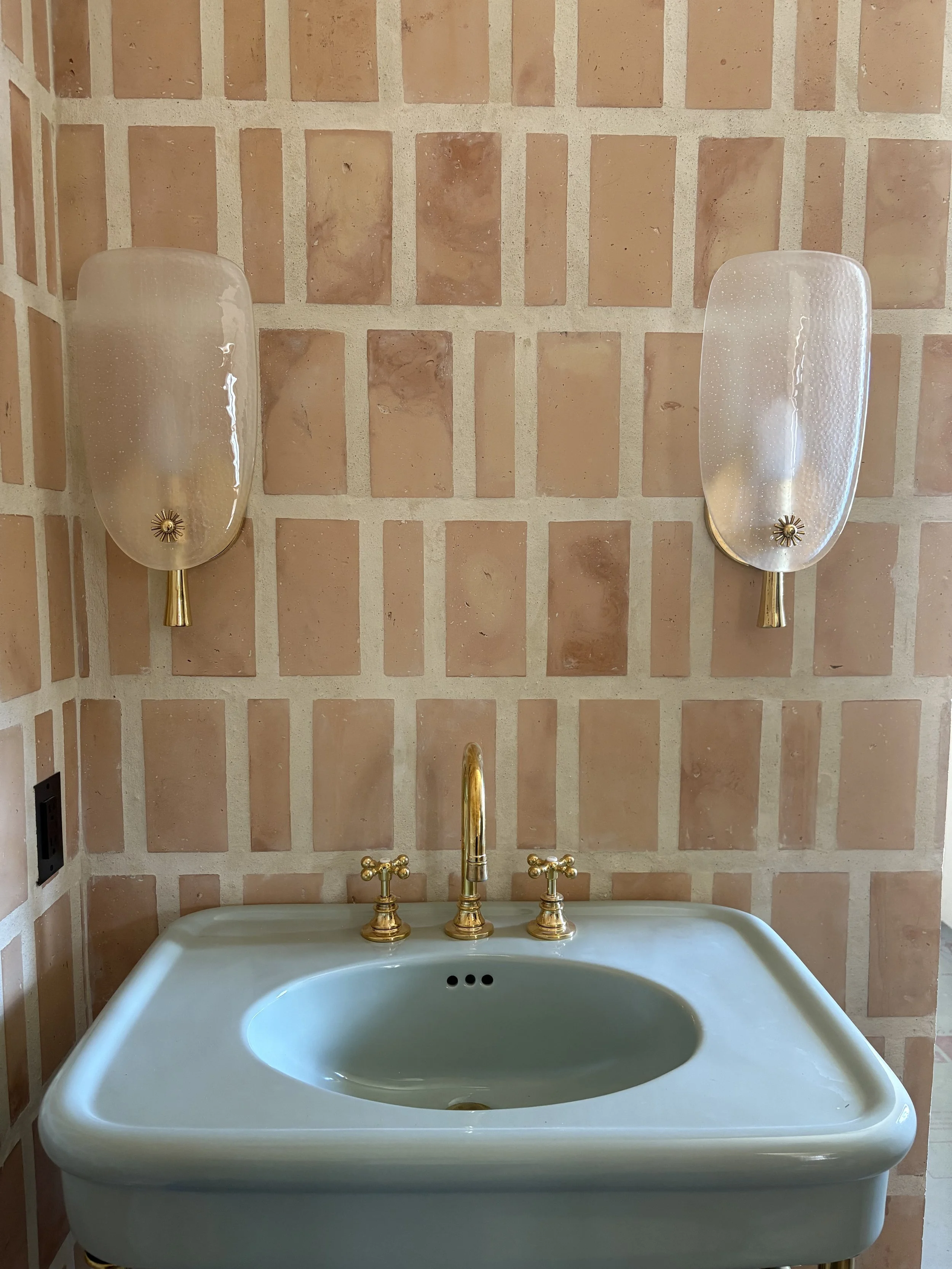Natural vs. Man Made: Why your Floors, Countertops and Walls Want Real Stone with Breda & Guy Kellner
In this episode, I sit down with Breda and Guy Kellner of Paris Ceramics to talk about their extraordinary work with natural and reclaimed stone. I’ve long admired how they honor the history and geology of each material, transforming salvaged slabs into flooring, fireplaces, and surfaces that feel both timeless and deeply alive. We talk about what it means to live with materials that change and age, why patina is worth celebrating, and how true craftsmanship connects us to the past while shaping spaces for the future. This is a conversation about beauty, imperfection, and choosing to design with time—not trends.
Watch this entire episode on YouTube HERE
KEY TAKEAWAYS
I had the joy of sitting down with Breda and Guy Kellner of Paris Ceramics. Their work with stone is so much more than creating flooring or wall treatments—it’s about honoring history, geology, and craftsmanship while helping us live with beauty that endures. Breda and Guy invite us to think differently about the surfaces we walk on and the walls that surround us, encouraging us to see stone as something alive with memory, not just a building material.
The Mission: Handmade and Natural
Breda and Guy stay true to a simple but powerful mission: if it’s handmade or natural, they’re interested. Their focus is on wood, stone, and hand-painted tile—materials that come directly from the earth or skilled human hands. They resist the temptation to expand into anything outside this vision, even though countless suppliers knock on their door. Their philosophy is rooted in simplicity and integrity: natural or handmade, nothing else.
They also push back against porcelain, which they see as predictable and soulless compared to natural stone. Porcelain may be convenient, but it lacks the depth, story, and evolving beauty that stone provides.
“Porcelain will look exactly the same in a hundred years, while stone carries the imprint of centuries of footsteps.” — Guy
Salvaging Stories from Europe
One of the most fascinating aspects of their work is salvaging stone from old buildings in France and Spain. Rather than letting these historic materials be crushed and discarded, they reclaim and transform them into usable surfaces. About 20–25% of their business is dedicated to reclaimed stone, often checkerboards from centuries-old Spanish homes or limestone slabs from French farmhouses.
Guy described walking into old Spanish estates where grand entrance halls were paved with marble checkerboards, many of them chipped and worn by centuries of footsteps. Instead of seeing damage, he sees design ingenuity and cultural history—proof that someone, hundreds of years ago, decided to be a designer in their own right.
Craftsmanship that Brings Stone to Life
The Kellners’ Virginia factory is where the transformation happens. Craftspeople who have worked with them for decades cut, brush, and finish each slab. They can age stone to look centuries old or refine it for a contemporary feel. Every piece is touched by hands that know how to coax beauty out of the material.
One example they shared: a Honduran craftsman named Felicia, age 72, who still works magic restoring damaged stone, brushing life back into it for new homes. These craftspeople aren’t just workers—they’re stewards of tradition, carrying skills that can’t be replicated by machines.
Floors That Are One of a Kind
Unlike mass-market options, Paris Ceramics creates floors that are truly unique. They cut to order, create custom patterns, and ensure that no two homes ever look alike. Whether it’s a geometric checkerboard from Spain, a custom-designed pattern in mystic gray and white stone, or a Greek key border framing a driveway, their work emphasizes individuality.
Breda lit up when describing a Regency-style home where a Greek key stone pattern framed the motor court. Every module was numbered, shipped, and installed so that the design could unfold perfectly. The result: a driveway that looked more like art than pavement.
“There is no other floor like that in any other house in America.” — Breda
Mont Blanc in a Telluride Apartment
One standout project involved stone quarried at the base of Mont Blanc in France—open only a few months each year because of snow and ice. The material was used in a 6,000-square-foot Telluride apartment, with slabs carefully numbered to maintain the flow of veining across walls and floors.
The pièce de résistance was a curved fireplace wall with no corners, each slab bent and hollowed to create harmony without overwhelming weight. It was a true masterpiece, showcasing how natural stone, when carefully considered, can be both monumental and deeply personal.
Living with Patina and Imperfection
Breda and Guy are passionate about dispelling the myth that natural stone is “too high maintenance.” They argue that stone, like a beloved fabric or wooden table, only gains beauty with time. Stains can be buffed out, slabs can be replaced, and imperfections tell the story of a home well-lived in.
Breda shared a story of a Florida client debating whether to use limestone around a pool, worried about berries falling from nearby trees and staining the stone. Her take? The berries are part of the beauty, part of the story of living with nature. “The stone is just an extension of nature,” she reminded us.
Designing with Time, Not Trend
At its heart, this conversation was about choosing materials and designs that age with us, rather than chasing perfection or uniformity. Breda and Guy’s work reminds us that when we invite stone, wood, and handmade surfaces into our homes, we’re welcoming history, craft, and nature. Their approach is not about resisting change but embracing it—letting materials evolve alongside our lives.
“The stone is just an extension of nature.” — Breda
Talking with Breda and Guy Kellner reminded me that the beauty of home is never about perfection—it’s about connection. Connection to place, to craft, to the passage of time. Their work challenges us to slow down and consider not just how something looks the day it’s installed, but how it will live with us over years, decades, even generations. Stone, in their hands, becomes more than a surface—it becomes a story we get to walk on every day.
If you’ve ever wondered whether it’s worth investing in natural or reclaimed materials, I hope this episode inspires you to see beyond the fear of maintenance and embrace the richness of patina, history, and imperfection. Listen to the full episode for more stories and insights from Breda and Guy, and consider how the materials in your own home can reflect not just style, but story.
Until Next Time
-Zandra
Links Mentioned In Episode
Paris Ceramics Website



